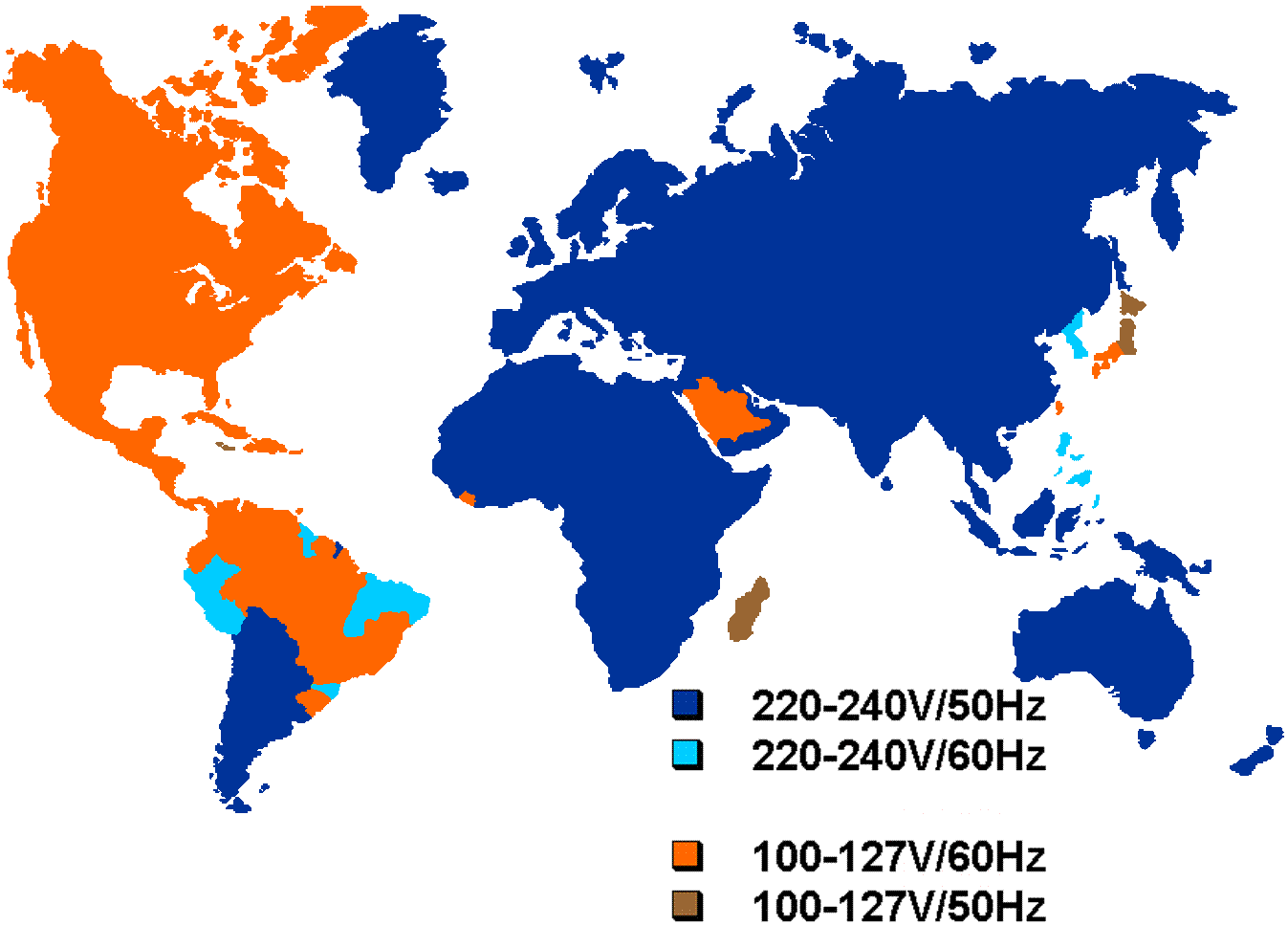
-

There seems to be no foreseeable standardisation of electricity worldwide - despite the obvious cost savings that would produce in producing everything from turbines to appliances in the one standard.
Smart switchable power supplies in domestic appliances have managed to cope with the different countries' power supplies, however we all still know how the fast-flicker of electric lighting involves adjusting shutter-speed of video shooting.

The waveform of 230 volt, 50 Hz compared with 110 V, 60 Hz.
Frame rates for TV and video have traditionally corresponded to multiples of the AC cycle and 60p is often cited as an ideal frame-rate, for smoothness - but as one of the majority who lives in a 50Hz country, I'd like to see a future standard of 100fps video one day.
http://www.quantumbalancing.com/worldelectricity/electricityif.htm http://en.wikipedia.org/wiki/Utility_frequency
-
AFAIK what's keeping old framerate standards alive is the need to maintain compatibility with broadcasting and receiving equipment already installed. Besides syncing shutter speed to light flicker, technically mains frequency hasn't been an issue for video FPS in decades, even 90s CRT monitors could be set at any frequency the model could handle. So that part of problem is already solved.
Also already solved is 60p support on computers, it's almost guaranteed on any recent system, but not at maximum resolutions. I guess that within few computer processor generations, HD 60p playback will be possible on low end PCs (hardware decoder or not) and perhaps finally offered on streaming services as well. As of now, 60p web streaming still demands a recent high-spec computer and some browser optimizations (of which I don't know much about), for that reason high frame rates are not supported on Youtube and most other services. Once that is solved, it's 60p joy for all... personally I look forward to watching hours of Japanese train videos in HFR :D
Also there is a good chance that variable sync will eventually become supported on new displays, enabling better motion in fullscreen video. Good times ahead, even though it'll still be necessary to set appropriate shutter speeds when filming.
-
The majority of the world will be receiving their video by television for some time yet. Satellite dishes cluster the sides of high-rise slums worldwide, yet those viewers are often the lucky few.
Local TV station broadcasters are simply the easiest way to get lots of data to lots of people.

http://jacobsmediablog.com/2014/04/22/you-oughta-be-in-pictures/
The first world's city-dwelling, comparatively wealthy consumers have been downloading movies for some time. But take a look at internet affordability and speeds:
http://en.wikipedia.org/wiki/Internet_access
Even analog TV has a surprising time-line of its own; lots of country areas still install transponders or modulators so as to re-broadcast a single digital satellite signal into small villages, mining camps, hotel rooms or trailer parks, Standardisation could be along way off yet.
-
If you think a little you understand is that internet streaming is the most dumb technology ever made.
-
In wider perspective, efficiency of technology depends on what is thought to be the purpose of that technology.
If on-demand personalized content is considered the purpose, streaming is fairly efficient, especially if users are given the option to keep the downloaded stream (as is unofficially the case with many services).
If delivering same content to everyone is considered the purpose, traditional broadcasting is more efficient.
Howdy, Stranger!
It looks like you're new here. If you want to get involved, click one of these buttons!
Categories
- Topics List24,068
- Blog5,725
- General and News1,392
- Hacks and Patches1,153
- ↳ Top Settings33
- ↳ Beginners256
- ↳ Archives402
- ↳ Hacks News and Development56
- Cameras2,390
- ↳ Panasonic995
- ↳ Canon118
- ↳ Sony156
- ↳ Nikon96
- ↳ Pentax and Samsung70
- ↳ Olympus and Fujifilm102
- ↳ Compacts and Camcorders300
- ↳ Smartphones for video97
- ↳ Pro Video Cameras191
- ↳ BlackMagic and other raw cameras138
- Skill1,960
- ↳ Business and distribution66
- ↳ Preparation, scripts and legal38
- ↳ Art149
- ↳ Import, Convert, Exporting291
- ↳ Editors191
- ↳ Effects and stunts115
- ↳ Color grading197
- ↳ Sound and Music280
- ↳ Lighting96
- ↳ Software and storage tips266
- Gear5,420
- ↳ Filters, Adapters, Matte boxes344
- ↳ Lenses1,582
- ↳ Follow focus and gears93
- ↳ Sound499
- ↳ Lighting gear314
- ↳ Camera movement230
- ↳ Gimbals and copters302
- ↳ Rigs and related stuff273
- ↳ Power solutions83
- ↳ Monitors and viewfinders340
- ↳ Tripods and fluid heads139
- ↳ Storage286
- ↳ Computers and studio gear560
- ↳ VR and 3D248
- Showcase1,859
- Marketplace2,834
- Offtopic1,335







